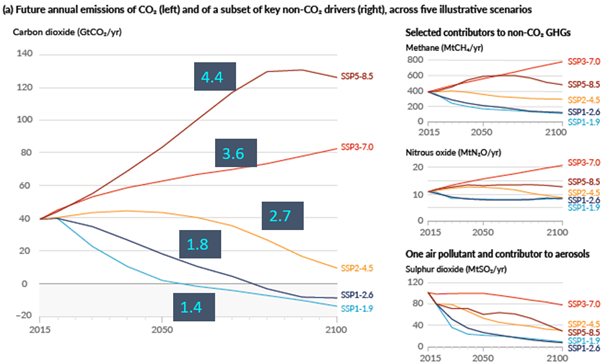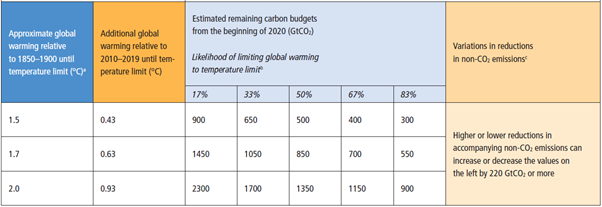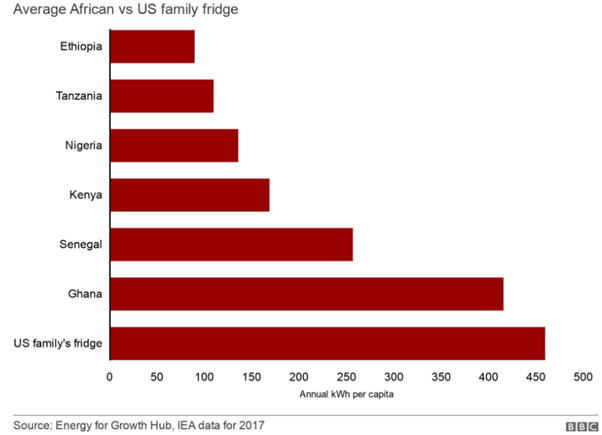COP26: A* for good intentions, but time is against us

COP26 was that once in a lifetime event in this country when you see your occupation and passion in the limelight, not for 15 minutes, but two whole weeks of inescapable media attention. Like the 1966 World Cup perhaps, but a tad more consequential!
Honest reactions
The UN Secretary-General António Guterres captured well the mixed feelings almost everyone shares about the Glasgow Climate Pact which emerged at the end. “It reflects the interests, the contradictions, and the state of political will in the world today. It is an important step but is not enough. We must accelerate climate action to keep alive the goal of limiting global temperature rise to 1.5 degrees. It is time to go “into emergency mode”, ending fossil fuel subsidies, phasing out coal, putting a price on carbon, protecting vulnerable communities, and delivering the $100 billion climate finance commitment. We did not achieve these goals at this conference. But we have some building blocks for progress.” (1)
CoP President Alok Sharma reiterated “this is a fragile win. We have kept 1.5 alive. That was our overarching objective when we set off on this journey two years ago, taking on the role of the COP presidency-designate. But the pulse of 1.5 is weak. That is why, whilst we have reached, I do believe, a historic agreement, what this will be judged on, is not just the fact that countries have signed up, but on whether they meet and deliver on the commitments. During our Presidency year, which started at the start of this summit, the UK will ensure that we work really closely to ensure that the commitments that have been set out are being delivered by countries. Collectively we have got this over the line. But as I say, the hard work starts now.”(2)
Sharma has been working as President of COP26 for less than a year, and if he didn’t fully appreciate it at the time he accepted the post, he surely does now: solving the climate emergency is the most wicked problem humanity has yet faced.(3) Easy solutions, there are not. Fatih Birol, executive director of the International Energy Agency, speaking to the Guardian at the end of COP26, gave the reality check that more than 40% of the world’s existing 8,500 coal plants would have to close by 2030, and no new ones could be built, to stay within the 1.5°C limit. (4) The implications of acting on such a response to the emergency pin-balled from one side of my head to the other and back. This is what it would look like if we treated climate change as an actual emergency. The short-term suffering and pushback from populations around the globe would be immense.
In fact, to be tamed, the climate science beast might need to be fed much more sacrifice: we need to halve emissions every decade from now until 2050. The rapid roll-out of renewables has been finding it hard to keep up with growing global demand for energy, let alone, as well, displace half our use of fossil fuels in the next ten years. But Kevin Anderson, Professor of Energy and Climate Change at the Universities of Manchester (UK), Uppsala (Sweden) and Bergen (Norway) tweeted “We’ve emitted 1/4 trillion tonnes of CO2 since Paris in 2015 when our ‘so-called’ leaders signed up to cut emissions in line with 1.5-2°C. Yet here at COP26, world leaders collectively chose to sign a death warrant for many of our own children tomorrow & poorer communities today.”(5)
Many climate activists go further, for example George Monbiot writing in the Guardian: “The Glasgow Climate Pact, for all its restrained and diplomatic language, looks like a suicide pact. After so many squandered years of denial, distraction and delay, it’s too late for incremental change. A fair chance of preventing more than 1.5 °C of heating means cutting greenhouse gas emissions by about 7% every year: faster than they fell in 2020, at the height of the pandemic. What we needed at the Cop26 climate conference was a decision to burn no more fossil fuels after 2030.”(6)
What the Glasgow Climate Pact says
Nevertheless, as a document endorsed by all 197 countries in the UNFCCC, the Glasgow Climate Pact is honest about the fragility of its aim to keep 1.5 alive: it expresses “alarm and utmost concern that human activities have caused around 1.1 °C of warming to date, that impacts are already being felt in every region, and that carbon budgets consistent with achieving the Paris Agreement temperature goal are now small and being rapidly depleted; and recognizes that the impacts of climate change will be much lower at the temperature increase of 1.5 °C compared with 2 °C and resolves to pursue efforts to limit the temperature increase to 1.5 °C”.
Yet it confirms the huge credibility gap between current commitments and the science, and how time is running out: it “recognises that limiting global warming to 1.5 °C requires rapid, deep and sustained reductions in global greenhouse gas emissions, including reducing global carbon dioxide emissions by 45 per cent by 2030 relative to the 2010 level and to net zero around mid-century, as well as deep reductions in other greenhouse gases; [yet] notes with serious concern the findings of the synthesis report on nationally determined contributions under the Paris Agreement, according to which the aggregate greenhouse gas emission level, taking into account implementation of all submitted nationally determined contributions, is estimated to be 13.7 per cent above the 2010 level in 2030”.
If nothing else, COP26 must have brought home to many people beyond the IEA’s experts the scale of the climate challenge, and whilst many personal behaviours can reek of cognitive dissonance, any actual solution may be beyond the reach of existing socio-economic structures, but changing them would be no guarantee of success either.
So the Glasgow Climate Pact pleads for stronger action. It requests “Parties to revisit and strengthen the 2030 targets in their nationally determined contributions as necessary to align with the Paris Agreement temperature goal by the end of 2022, taking into account different national circumstances”; 40 countries failed to offer new or updated NDCs before COP26. And “calls upon Parties to accelerate the development, deployment and dissemination of technologies, and the adoption of policies, to transition towards low-emission energy systems, including by rapidly scaling up the deployment of clean power generation and energy efficiency measures, including accelerating efforts towards the phasedown of unabated coal power and phase-out of inefficient fossil fuel subsidies, recognizing the need for support towards a just transition”.
It also has much to say about adaptation, finance and loss and damage:
- A two-year Glasgow Sharm el-Sheikh work programme to define a new global goal on adaptation.
- A pledge from developed countries to “at least double” adaptation finance between 2019 and 2025.
- Acknowledgement of the loss and damage already being caused by warming and welcome for the operationalisation of the “Santiago Network”.
- A two-year Glasgow Dialogue “to discuss the arrangements for the funding of activities to avert, minimize and address loss and damage”.
- A note of “deep regret” that the $100bn climate finance goal has not yet been met, with developed countries “urge[d]” to “fully deliver…urgently and through 2025”.
- A pledge to “significantly increase” financial support and a new body to agree the post-2025 finance goal by 2024.
- Repeated references to human rights, the rights of Indigenous peoples and gender equality, as well as the need for social and environmental safeguards.
- Recognition of the need to protect, conserve and restore “nature and ecosystems…including through forests and other terrestrial and marine ecosystems”.
Follow the science
How certain are the outlooks for future climate impacts? The evidence comes from the IPCC’s 6th Assessment Report (AR6). (7) Taken from this report, Figure 1 shows five scenarios or SSPs (Shared Socioeconomic Pathways) which represent potential futures which follow very low to very high emissions pathways and result in correspondingly relatively modest to apocalyptic rises in global surface temperature by 2100: the best estimates being increases of 1.4, 1.8, 2.7, 3.6 and 4.4 °C above the average pertaining in 1850–1900. The pathways are labelled by the range of radiative forcing values they each produce in the year 2100, respectively 1.9, 2.6, 4.5, 7.0, and 8.5 W/m2.

The middle pathway (SSP2-4.5) has emissions roughly flatlining to 2050 and clearly shows that the Paris Treaty commitment to limit the temperature rise by 2100 to 2°C becomes impossible if emissions have not fallen dramatically by 2050: it creates a 2.7°C rise. The only pathway that makes 1.5°C come to pass (SSP1-1.9) requires net zero to be reached by 2050, and then substantial amounts of negative emissions throughout the 2nd half of this century. These actually claw back the temperature rise by 2100 to 1.4°C from 1.5°C in 2040 and 1.6°C in 2060. The likelihood of achieving SSP1-1.9, or even SSP1-2.6, which limits the temperature rise to 1.8°C in 2100, is dependent on the future, starting now, being very different from the past (i.e. a discontinuity in the curve at 2020). If 1.5 is alive, it is hanging in there by a thread, a sword of Damocles hanging over it held by a single hair. The table below from IPCC AR6 confirms the remaining carbon budget with a better than evens chance (67%) of staying within 1.5 is around 400 GtCO2, just 10 years’ worth of current emissions:

Positives to take away from Glasgow
The glass half-full aspects of COP26 were the engagement by the private sector and the plethora of new initiatives. ‘Cash, coal, cars and trees to keep the world to 1.5 degrees’ was the doggerel coined by Boris Johnson’s spokesperson before the Cop26 conference, anticipating the UK COP team’s strategy of injecting a carefully choreographed string of positive announcements spread across the two weeks of the conference. These included:
- CASH: 500 global financial services firms launched the Glasgow Financial Alliance for Net Zero (8): agreeing to align $130 trillion – some 40 per cent of the world’s financial assets – with the goals set out in the Paris Agreement, including limiting global warming to 1.5°C.
- COAL: more than 40 countries – including major coal-users such as Poland, Vietnam and Chile – agreed to shift away from coal.
- CARS: 100 national governments, cities, states and major car companies signed the Glasgow Declaration on Zero-Emission Cars and Vans to end the sale of internal combustion engines by 2035 in leading markets, and by 2040 worldwide. At least 13 nations also committed to end the sale of fossil fuel powered heavy duty vehicles by 2040.
- TREES: leaders from over 120 countries, representing about 90 per cent of the world’s forests, pledged to halt and reverse deforestation by 2030.
Other initiatives launched during CoP26 were:
- United States and China pledged to boost climate cooperation over the next decade.
- Glasgow Breakthroughs (9) to speed up affordable clean tech worldwide: the aim is to make clean technologies the most affordable, accessible and attractive choice for all globally by 2030, in each of the most polluting sectors: Power, Road transport, Steel, Hydrogen and Agriculture.
- Methane pledge, led by the US and the EU, by which more than 100 countries agreed to cut emissions of this greenhouse gas by 2030.
- 11 countries which created the Beyond Oil and Gas Alliance (BOGA). Ireland, France, Denmark, and Costa Rica among others, as well as some subnational governments, launched this first-of-its-kind alliance to set an end date for national oil and gas exploration and extraction.
Then there were these COP Fringe events of great relevance to buildings and real estate stakeholders:
- BBP: Commercial Buildings: A real asset in addressing climate change? which highlighted the need for “Radical collaboration”.
- Evora: Real Estate Investment and Finance: Climate Risk and Opportunities which headlined SFDR must incorporate embodied carbon as well as ‘operational energy’, GRESB needs a massive transition to remain fit for purpose ie performance based data and how investors currently prioritise transition risk in Europe, but physical risk in the US and APA.
- IPF: Global Pathways to Zero Net Carbon Emissions which ended on the wish for investors to “accept a lower rate of return on capital used to transition to net zero in order to protect the future”.
- Aldersgate Group: Harnessing the crucial role of resource efficiency and the circular economy in supporting decarbonisation.
- UKGBC: Whole Life Carbon roadmap to net zero by 2050 for the entirety of the UK Built Environment (new and existing buildings and the direct infrastructure supporting them).
Summing up
When all is said and done, some abiding thoughts reinforce the wickedness of the climate challenge. Globally, emissions up to 2020 have been around 2,400 Gt. A residual global budget of 400 Gt for this century is daunting, not least given that by 2020, the UK’s historical CO2 emissions amounted to some 80 Gt since they started materially in 1750. (10) Fortunately, UK territorial emissions have been falling rapidly this century even if they have now only returned to the levels of the mid-19th century. (11) Our net zero by 2050 strategy is the least we should do to end our contribution to climate change.
Meanwhile in developing countries, an unsustainably low per capita electricity use must be enabled to grow, to reduce the inequality between countries exposed by this metric alone, as starkly shown in Figure 2:

Facing a looming existential threat, capitalism is under greater scrutiny than ever before. Can it direct capital flows to energy efficiency and renewables at sufficient pace whilst starving flows to fossil fuels. To act rationally, the world’s economies must transition away from fossil-fuel subsidies towards a global carbon tax on fossil fuel producers. This could generate the funds to meet the costs of transitioning to a carbon free future, the costs of climate justice for vulnerable countries, the costs of a just transition to clean jobs for the people and communities currently dependent on fossil fuel industries. The Green Party called on the UK to announce a carbon tax at COP26, proposing it should start at £100 per tonne of CO2 released, rising to £500 per tonne by 2030 and pushing other countries to follow suit. (12) It seems regrettable that measures of this type to create system changes were not on the official agenda in Glasgow.
Meanwhile, Verco is here to help people achieve zero: doing as much as possible effectively is a lot better than doing nothing or wasting efforts. Although governments are being slow to act in the face of many difficult climate policy choices, the pandemic and geopolitical tensions, NGOs and leaders in business are taking action and working towards net zero goals. The commercial world has started moving in the right direction and consumer awareness and interest (helped by COP26 and the media attention) are increasingly pushing for all organisations to add to the momentum. Lots must be done, CAN be done and will make a positive difference.